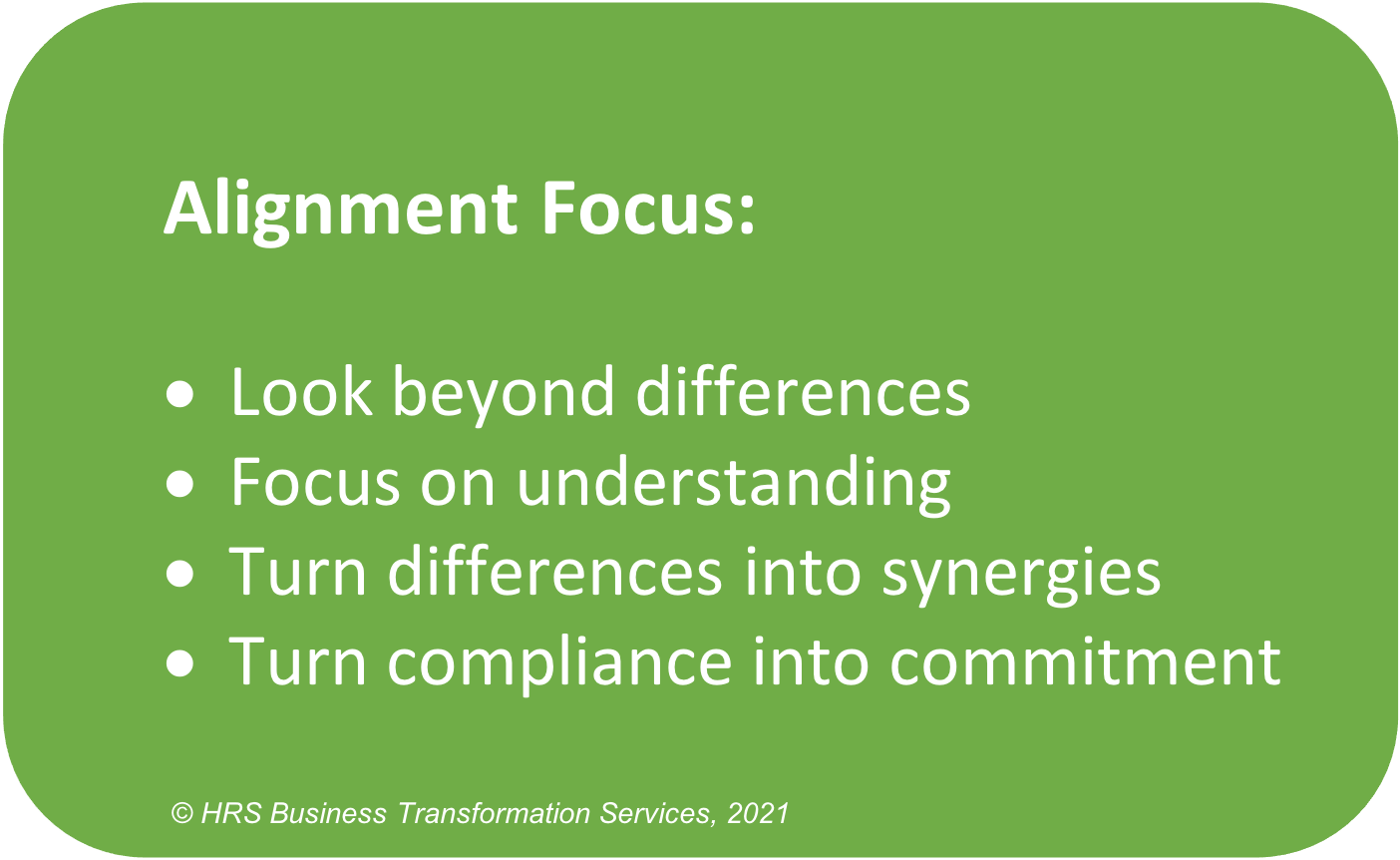Successful teams are not interested in trying to find out ‘who is right’ and ‘who is wrong’. They are not really keen on reaching ‘agreement’. They aim for more.
Why?
Because they understand that people are complex creatures. We all have our own ambitions. We have different aspirations, perceptions, feelings, and emotions.
People have to interact with each other and work successfully with each other. But it is impossible for them to agree on everything. Sure, you can agree on some things, if they are fairly factual. In a business situation where facts are essential, then you might be able to discuss right or wrong, good or bad, correct or incorrect.
But in most business situations next to facts also individual emotions, ambitions, values and perceptions play a role. And for most people these will count for more than just the simple facts.
Successful teams and their leaders understand that if you try to create agreement in such a context, you run into situations where people try to convince each other; they try to sell their ideas or persuade you to support their side. These situations can easily become non-constructive; they can create negative energy. The upshot is that you end up somewhere in the middle. You create an outcome involving a little bit of your ideas and a little bit of mine. You create something that is, at best, in between the two. It is what I call ‘a 5 out of 10 solution’.
You could also call this a compromise.
Compromises are very often not sustainable.
Successful teams are saying: I strongly believe that a 5 out of 10 solution is not good enough. If we combine our strengths and try to create something new, if we find a way to reconcile our differences, then the solution we come up with could well be a 10 on 10.
“If we both pour water into our wine, we will both have poor wine. If we combine the qualities of our grapes, we can maybe create a great new wine.” – Aad Boot
For those who know Charles Hampden-Turner and Fons Trompenaars. They introduced me to their dilemma reconciliation theory years ago. This had a profound impact on me. Working with them on concrete business cases, I learned that aiming to achieve dilemma reconciliation was more than just a theory.
It works
Teams who operate successfully in complex business situations know this and aim for what I call ‘alignment’ instead of ‘agreement’. They don’t always reach a 10-10. They know it is not always possible. But it is always their aim.
They do not readily go along with the person who says: let’s compromise and move on. It is not in their mindset. They have a very specific way of looking at differences. They look beyond those differences. They are not satisfied with just being aware of the existence of those differences. They want to understand them better, and they stimulate open discussions that increase mutual understanding.
They turn the differences as much as possible into synergies.
And they have a very specific antenna that filters out the question: are we really committed to what we say and decide, or are we just complying? They specifically look for true commitment in the team. Again, you can’t always reach full commitment on things. Reaching commitment is often a step-by-step process. But these teams and their leaders see compliance as a warning signal. You can maybe comply for a short period of time, but not structurally. If you want people to really own decisions as if they were their own, you have to turn compliance into true commitment. Adopting an alignment focus helps.

Stay up to date with LeadershipWatch articles and news! Use the subscription button (PC: right-hand sidebar; Mobile: button below this article). Your personal information will be kept strictly confidential.
Photo: Shutterstock.com
Aad Boot is a global business advisor, change & transformation leader/program manager, executive team facilitator, leadership coach, and frequently asked keynote speaker. He is founder and managing partner at HRS Business Transformation Services.
Hanneke Siebelink is research partner and writer at HRS Business Transformation Services, and author of several books and the Expert Series. She is currently learning Mandarin Chinese.
Find out more about our team, our services, and keynotes.













Pingback: Three Star Leadership | Wally Bock | From the Independent Business Blogs: 2/17/21